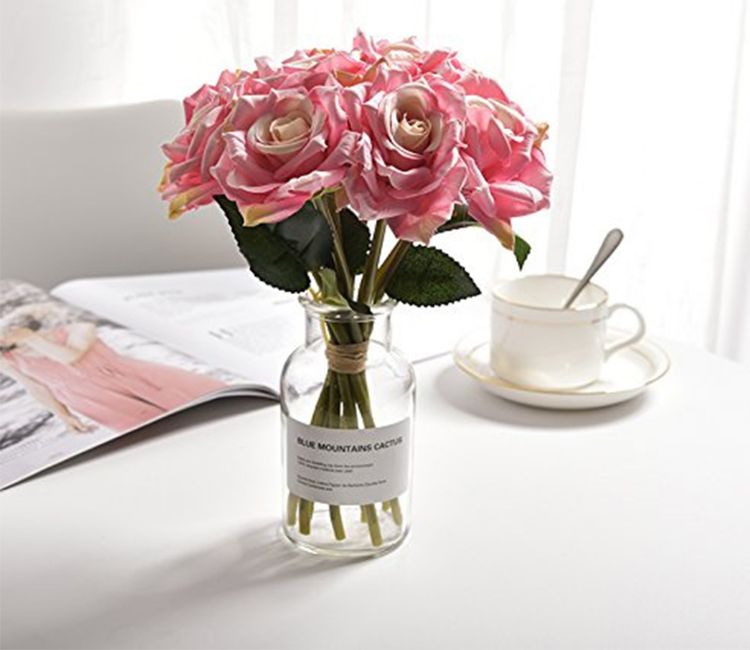The Evolution of Artificial Flowers: From Ancient Origins to Modern Innovations

Strong 8k brings an ultra-HD IPTV experience to your living room and your pocket.
Artificial flowers have graced human spaces for centuries, evolving from simple imitations of nature to stunningly realistic replicas. Once a rare luxury, these decorative accents are now widely embraced in home decor and event planning. This article delves into the fascinating history and modern innovations of artificial flowers, illustrating how they have transformed from rudimentary creations to versatile design elements.
Ancient Origins
The concept of artificial flowers dates back thousands of years. Ancient Egyptians were among the first to craft artificial blooms, using dyed linen and papyrus to mimic the vibrant flora of the Nile. These early designs were often placed in tombs and temples as offerings to the gods, symbolizing eternal beauty and life.
Similarly, in ancient China, artisans created flowers from silk during the Tang Dynasty (618-907 AD). Silk flowers became a status symbol, reserved for the wealthy and used to embellish clothing and elaborate headpieces. Meanwhile, in Europe, the Italian Renaissance sparked interest in artificial flower-making, with artisans crafting intricate blooms from gold, silver, and other precious materials for royal courts.
The Industrial Revolution and Mass Production
The Industrial Revolution of the 18th and 19th centuries revolutionized artificial flower production. With advancements in manufacturing techniques, materials like wax, porcelain, and later, plastics, became popular choices. Factories in Europe began producing artificial flowers on a large scale, making them more affordable and accessible to the middle class.
Paris emerged as the hub of artificial flower craftsmanship during the 19th century. Skilled artisans used a combination of silk and fabric to create lifelike petals and leaves. These creations were prized for their exquisite detail and became a fashionable addition to women's hats and dresses.
Artificial Flowers in Modern Home Decor
Today, artificial flowers are an integral part of home decor, offering unmatched convenience and versatility. Unlike fresh flowers, which require regular maintenance, artificial flowers for decoration provide a long-lasting alternative without sacrificing aesthetic appeal. They are available in a vast array of designs, colors, and materials, allowing homeowners to tailor their choices to their personal style and seasonal themes.
From realistic silk roses to minimalist paper orchids, artificial flowers seamlessly blend with modern interiors. They are often used as centerpieces for dining tables, accents for living room spaces, or even as wall art installations. The durability of artificial flowers also makes them ideal for outdoor settings, such as patios and balconies, where they resist weather conditions and maintain their charm year-round.
Technological Innovations
The 21st century has brought significant advancements to the artificial flower industry. Innovations in materials and manufacturing techniques have resulted in hyper-realistic designs that are almost indistinguishable from natural blooms. High-quality silk, latex, and polyurethane are now used to replicate the texture, color, and even the fragrance of real flowers.
One notable trend is the incorporation of eco-friendly materials. As sustainability becomes a priority, manufacturers are exploring biodegradable and recyclable options to reduce environmental impact. Additionally, 3D printing technology has entered the market, enabling the creation of custom designs with intricate details and precise color matching.
Artificial Flowers in Event Planning
Beyond home decor, artificial flowers play a pivotal role in event planning. From weddings and parties to corporate events, these blooms are valued for their practicality and visual appeal. Artificial flower arrangements can be prepared well in advance, ensuring that they look fresh and vibrant on the day of the event.
For weddings, in particular, artificial flowers offer numerous benefits. Brides can preserve their bouquets as keepsakes, and decorators can achieve consistent themes regardless of seasonal flower availability. Additionally, artificial floral backdrops and centerpieces add a touch of elegance to any venue without the risk of wilting.
The Future of Artificial Flowers
As technology and design continue to advance, the future of artificial flowers looks promising. Smart flowers embedded with LED lights or sensors are emerging, offering interactive and customizable options for modern consumers. These innovations open new possibilities for integrating artificial flowers into smart homes and immersive environments.
Furthermore, collaborations between artists and technologists are pushing creative boundaries. From oversized sculptures in public spaces to wearable flower designs, artificial flowers are being reimagined as both functional and artistic elements.
Conclusion
The evolution of artificial flowers reflects humanity’s enduring fascination with nature and beauty. From ancient Egyptian papyrus creations to cutting-edge designs featuring 3D printing and eco-friendly materials, artificial flowers have come a long way. Today, they are more than just decorative pieces; they are a testament to human creativity and innovation.
Whether adorning homes or enhancing special events, artificial flowers for decoration offer timeless charm and endless possibilities. As trends evolve, these versatile blooms will continue to inspire and captivate, blending tradition with modernity in every petal and leaf.
Note: IndiBlogHub features both user-submitted and editorial content. We do not verify third-party contributions. Read our Disclaimer and Privacy Policyfor details.


